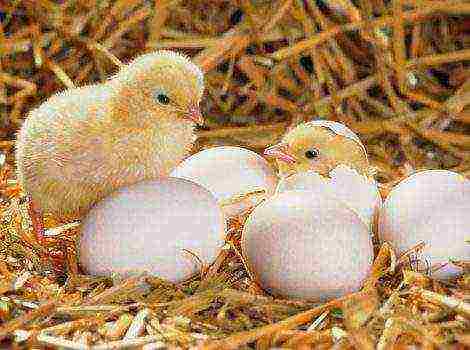Content
Elena Krivousova
Summary of the lesson in the preparatory group "Where did the bread come from?"
Educator: Krivousova Elena Viktorovna
Software content:
1. Consolidate children's knowledge that breadIs a valuable food product that people cannot do without.
2. Expand your understanding of how much work you need to spend to get bread, which is served daily to the table.
3. To educate children to respect bread, and the labor of farmers who grow bread- the most important wealth of the country.
4. Fix the name of the professions - tractor driver, combine operator, farmer, baker.
5. To develop the speech of children, to enrich the active vocabulary.
6. Develop logical thinking.
Preliminary work:
1. Examining illustrations and paintings about bread, labor of farmers, grain growers.
2. Reading stories and memorizing poetry: S. Drozhzhina "Loaf", A. Nekrasov "Niva", J. Diagutyte “Lullaby”, A. Musatova “How bread came to the table ", S. Shurtakova “The grain fell into the ground”, E. Trutneva “Golden rain”, N. Semenova “Khlebushko ".
3. Guessing riddles, memorizing proverbs and sayings.
4.D. I. "Harvesting"
5. Role-playing game, “Travel to the native land”.
6. Baking puff pastry bagels.
Vocabulary: Rye bread, wheat bread, harvester, combine operator, tractor, tractor driver, elevator, winter crops, farmer, farmer, agronomist, bakery, baker, grain, bread, meliorators, mill, miller, bakery.
Course of the lesson:
Popular wisdom says: “There is no better flower than an ear of wheat, there is no better garden than a wheat field, there is no better aroma than the smell of freshly baked of bread».
The teacher reads a poem by Ya. Akimov “Bread".
“They plow every spring
They raise the virgin soil
They sow, reap, do not sleep at night.
Know from childhood how they grow bread.
Rye bread, loaves, rolls
You can't get it for a walk.
People the bread in the fields is cherished,
Forces for they do not regret bread.»
Guys, what is this poem talking about? Where does the bread come from??
Children's answers.
Educator: Right, oh bread... Children, today we will talk with you about bread, about the work of people who raise bread... What proverbs do you know about the work of farmers?
"The labor of farmers is great and honorable".
"Human labor feeds, but laziness spoils".
Educator: Guys, what crops do you know?
Children's answers, examination and comparison of ears of rye and wheat.
Educator: How are rye and wheat similar? (This is grain plants, they grow in the field, from their grains they make bread). How do they differ from each other? (An ear of wheat is thicker than an ear of rye, wheat grains are larger, and rye is longer; dark flour is obtained from rye, therefore black flour is baked from it Rye bread).
Listening to a song "Rye".
Show children the difference and similarity between wheat and rye of bread.
Educator: Guys, where do they sow bread? Guess the riddles "Not the sea, but worried?", "He will borrow grain, return the loaf" (Field)
The child reads a poem by E. Trutneva. "Golden rain"
“On the ground is damp, not hard,
Where the tractors have passed.
Shallow grooves
We lay in the black arable land.
And until the evening and later,
Until midnight with darkness
The grains fell like rain
Like golden rain. "
Educator: Guys, what types of wheat do you know? (Spring and winter.)
Autumn has come, they have removed from the fields bread and they are empty... Do you think this is where the work ends farmer?
Children: Fertilizers are delivered to the fields, the fields are plowed, winter crops are sown.
Educator: In winter, work is also carried out in the fields. Tractors leave for winter fields and shovel snow into long shafts. This work is called snow retention. Repeat this word “snow retention”. Guys, this is a very important job! Snow retention is carried out so that the wind does not carry away the snow, so that winter crops do not freeze, and there is a lot of moisture in the spring.
Educator: Guys, tell me what the people who repair cars, combines, tractors are called?
Children: They are called machine operators, and they repair equipment in winter in repair shops, preparing it for spring work.
Educator: Spring has come. It's a hot time, it's time for big worries. What works came with the coming of spring? What changes have occurred in nature? What kind of work do collective farmers have to do in the fields?
Children: the sun has warmed up, the snow has melted, the earth is warming up, the tractor drivers are plowing the land.
Educator: Guys, how did you harvest the crops before? (Viewing illustrations) This is how collective farmers used to work the land, because there were no machines before. How many knows how the harvest used to be?
Children: They reaped with a sickle.
Educator: Tell me, how is the harvest now?
Children: People are helped by machines.
Educator: Guys look at the picture "Harvest"-the harvester cuts the ears, they fall into the middle of the harvester, and wheat grain is poured out of the long sleeve into the dump trucks.
Fizminutka:
Cha-cha-cha-our stove is hot. (squats)
Chi-chi-chi-oven bakes
Chu-chu-chu- will be all on a roll (claps in front of you)
Cho-cho-cho-careful-hot.
Educator: Why should the soil for sowing be soft?
Children: To make it easier for the grains to germinate.
Educator: After the land is plowed, what is done with it?
Children. The plowed field is harrowed.
Educator: How are they harrowing her?
Children: Attach the harrow to the tractor.
Educator: Here the field has been harvested, now it is possible to sow. What machines help people sow?
Children: Seeders.
Educator: Plants also need watering. But rain doesn't always happen when you need it. And then people come to the rescue. They set up watering machines in the fields, irrigate the land. Watering means watering. Repeat this whole word - "irrigate". And people employed in this job, called - meliorators.
Educator: Look at the picture (showing illustrations from the book "Tractor" by L. Vinogradova)... These are the machines and devices a person uses to water plants.
Spikelet: Guys, guess riddle: “He walks, cuts a wave, does grain flow from the pipe? "
Children: Combine.
The bread is ripe, motors in the fields
The song of the harvest was started.
Combiners go out to the steppe
Field ships.
Educator: Listen to the music of I. Kishko "Combiner". Guys who work on the harvester?
Children: Combiner.
Educator: Guess riddle: “Out in the open, in the sea of bread, a castle with towers up to the sky, a castle with towers up to the sky will keep the whole sea of bread".
Children: Elevator - a building where grain is stored.
Educator: And then where is the grain transported?
Children: To the mill, flour mill.
Educator: What are they doing there with the grain?
Children: Grain is ground into flour.
Educator: What is the name of the person who works at the mill?
Children: Miller.
Educator: Where is the flour being taken then?
Children: On the bakerywhere the bakers bake bread.
Teacher Guys, let's turn into bakers too, do you want? Then go to the table and put on aprons, I have prepared you a magic dough from which we will prepare bagels for our toy store, Take a piece of dough, roll it in flour so that it does not stick to your hands and roll out the sausage, connect the edges and give the shape we need. Put the figurines on a baking sheet and take them to dry.
Educator: Guys, bread every person needs every day, without you can't live bread! This is why you need to treat bread with great respectcherish every piece of bread! Bread - our prosperity and wealth. Take care of bread!
Summary of the lesson in the preparatory group on the formation of a holistic picture of the world, topic: "Bread is our wealth"
The authors of the lesson: Pintesku I. S. - educator of the 2 qualification category, Nezhdanova Z. A. - senior educator of the highest qualification category, Pikunova N. N. - musical director of the highest qualification category, municipal preschool educational institution "Combined Kindergarten No. 30" Sergiev Posad.
Chapter:
Formation of a holistic picture of the world.
Software content:
To foster in children a careful attitude and respect for bread and the people who raised it;
Expand children's knowledge about the meaning of bread in human life;
To acquaint children with the process of growing bread;
Give an idea of how the bread came to our table; pay attention to the content of people's labor, to their coherence and mutual assistance in work, to the mechanization of labor;
Strengthen the knowledge of children that bread is one of the most important food products in Russia.
Preliminary work:
Conversation about harvesting bread;
Examining illustrations;
Memorizing proverbs, conversation, reading literary works on the topic; Examination of ears of rye and wheat;
Making baked goods from salted dough.
Course of the lesson:
Educator:
Guys, guests have come to us today, say hello. Today I invite you on a journey. But what we will talk about during our journey, you try to guess:
Riddle about bread
Easy and quick to guess:
Soft, lush and fragrant
He is black, he is white,
And sometimes it is burnt.
(Bread)
Children:
Bread.
Educator:
Yes, that's right, we'll talk about him. Bread, bread, bread. With a ruddy crust, fragrant, aromatic, hot, soft. He is the most important on every table. But what else it can be, you will tell me.
Didactic game "And what is it, bread?"
Selection of definitions for a noun. (Children stand in a circle and pass a ball in a circle and name definitions, for example, brown bread, fresh, fragrant, appetizing, soft, stale, white, hot, vitamin, airy, aromatic).
Educator:
Bread is different, but it is necessarily healthy and tasty. Bread contains vitamin B, which strengthens the nervous system, memory, and improves digestion. Guys, who knows where the bread came from?
Children:
They buy it in the store.
Educator:
Do you want me to tell you how he got to the store? But first, tell me who knows what bread is made of?
Children:
They are baked from flour.
Educator:
And what is flour, what is it made from?
Children:
From grains.
Educator:
Right. Wheat flour is obtained from wheat grains, and rye flour is obtained from rye grains. To get flour from grains, you need to spend a lot of labor and effort: first grow rye and wheat, then harvest. This is what the grain growers are doing. Do you guys want to know what this job is?
Children:
Yes, we want.
Educator:
Strong machines help people grow and harvest bread. In the spring, as soon as the ground thaws and dries up, a tractor leaves the field. Who leads him ...
Children:
Tractor driver.
Educator:
The tractor pulls an iron plow, which plows the ground deeply. And so the earth became soft, docile and loose. Now you can start sowing! Seeders are attached to the tractor and wheat grains are placed in the soil in even, neat rows. Now the wheat has sprung up. All summer the grains ripen in ears. The field at this time is very beautiful. Let us, as swami, become the seeds that we sowed in the field.
Physical education "A grain got into the ground"
A grain hit the ground, (squat)
It began to sprout in the sun (hands above your head)
The rain watered the ground,
And the sprout grew (slowly rise)
Stretched towards the light and warmth
And he turned around handsome. (2 times)
Educator:
Well, the grains are ripe. The harvest begins. (Children repeat the word in chorus and individually). And other machines come out onto the field - harvesters. Who is working on the combine?
Children:
Combiner.
Educator:
What does the harvester do?
Children:
Gathers ears.
Educator:
Harvester - cuts ears and threshes grains from them, these grains are poured into trucks through a special long sleeve, which continuously drive up at the signal of the combine operator. And at regular intervals, large yellow heaps of threshed straw descend from the straw bin of the combine.
Further, the machines carry the grain to the elevators (children repeat the word in chorus and individually) - special facilities for storing grain.
Where do you think the grain is transported from the elevators?
Children:
To the mill.
Educator:
That's right, and there the grain is ground into flour. Guys, where does the flour go then?
Children:
To the bakery, bakery.
Educator:
Right. There are huge vats of sourdough at the bakery. Flour, salt, sugar, water, yeast are added to the sourdough vat, and special machines use mechanical "hands" to knead the dough for bread. Let us turn into bakers and knead the dough for a loaf, stand in a circle.
Physical education "Karavai"
(Clench your hands into fists and take turns making them movements from top to bottom, as if kneading dough).
I mix, mix the dough,
There is a place in the oven
I bake, bake a loaf, ("we shift the dough" from hand to hand)
Roll over, roll over. (2 times)
And now the dough is mixed and it's time to put it in the mold and put it in the oven. When the bread is baked, it is loaded onto cars and taken to stores.
What else is baked from flour besides bread?
Children:
Buns, cookies, cakes, pies, crackers.
Educator:
And how are all these products called in one word?
Children:
Bakery products.
Educator:
What good fellows you are. You see, guys, how much work it takes to get bread. The Russian people are always very careful about bread. Bread is the head of everything. Only three words, but as the proverb says exactly about the importance of bread. Guys, what other proverbs do you know about bread?
Children:
(Children name proverbs and sayings and explain their meaning).
Proverbs and sayings about bread
"Without bread, there is no lunch." "Bread is father, water is mother." "If there is bread, there will be a song." "A lot of light - a lot of bread." "You should take as much bread as you eat." "Bread must always be finished." "Bread must not be thrown on the floor." "Not a big piece of the pie, but a lot of work."
Educator:
Children, please tell me what kind of work do grain growers in the fields to grow a good grain harvest?
Children:
They plow, harrow, sow, fertilize, reap.
Educator:
What machines help farmers?
Children:
Tractors, combines, trucks.
Educator:
How should you relate to bread?
Children:
Carefully, eat it all to the end, the bread should not be thrown away.
Educator:
Well, our journey has come to an end, and now you know how long our bread went to get to the store. Bread is the main wealth of our country and must be protected.
Download the summary of the lesson in the preparatory group on the formation of a holistic picture of the world, topic: "Bread is our wealth"
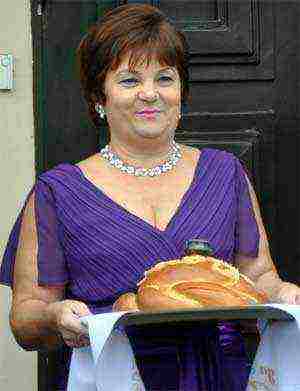 Organized educational area
Organized educational area
Goals:Clarify and consolidate children's ideas about growing bread.
To foster a respectful attitude towards bread, respect for the work of people involved in its cultivation. To acquaint who grows bread, where and from what; what cereals are used to make flour, what types of bread are there. To foster ecological culture.
Speech therapy tasks:
Develop coherent speech, enrich vocabulary, exercise in the selection of signs, exercise in the selection of synonyms, consolidation of speech therapy gymnastics, practice voluntary movement of the tongue, strengthen the muscles of the tongue, develop coordination of movements, fine motor skills of the hands, develop (finger gymnastics); develop breathing exercises; development of tactile sensations.
Vocabulary:- rye, wheat, grain, field, colossus, harvester, harvesting, elevator, grain grower, flour, wheat, rye, winter crops, spring crops.
Preliminary work.
Learning riddles, proverbs, sayings about bread. Reading poetry, stories about how bread is grown.
Demo material:
Bakery products, a piece of black bread, a loaf, ears of rye, wheat, various types of flour, children's gr. cars, picture of the field.
Q. Today, children, guests have come to us. Let's say hello.
D. Hello!
(The signal of cars is heard. Children's trucks enter the group. With ears, rolls, flour)
Q. Guys, I'm going to give you a riddle, and you try to guess it. And then you will find out that you have brought us the cars.
He is black, he is white,
And he's always tanned.
How we want to eat
We always sit down with him.
D. Bread.
B. Correct bread. What is bread made from?
D. From flour.
Q. What is the flour made from?
D. From grain.
Q. What time of year is grain sown?
E. In the spring (Spring bread)
Q. And when?
D. Autumn.
Q. This rye is called winter rye. It is sown before winter, autumn. The grains have time to hatch and germinate before the cold weather. And as soon as spring comes, the rye immediately begins to grow. And rye and wheat grow for a very long time, until next autumn.
Q. I will ask you one more riddle
A house grew up in a field,
The house is full of grain
The walls are gilded
The shutters are boarded up.
The house is shaking
On a stem of gold.
D. Kolos.
Q. Children, let's imagine that we are spikelets in the field and perform an exercise called "Spikelets".
(exercise for the development of coordination of movements "Spikelets")
In the spring the field was plowed up. Children make sliding movements of their palms against each other.
The field was sown with grain. They touch with fingers, one hand to the palm of the other and move the hand to the side ("sow").
The sun is hot. Cross palms, spread fingers, raise hands ("sun")
The earth is warmed. They lower their arms, making springy movements with their palms open to the floor.
Spikelets rose high
They are drawn to the sun. Bend your elbows, turn your palms towards each other and slowly raise your arms.
The wind is blowing
Spikelets shakes. Shake their arms over their heads.
Bent over to the right,
Swung to the left. Tilt the body and arms to the right, left.
And as it rains, Slowly lower their hands. Moving your fingers quickly.
The driver drinks and drinks the rye. Put your palms in a cup and bring them to your mouth ("drink")
What a cornfield! Raise their hands, fingers spread apart.
How beautiful she is. Shake hands overhead
Q. Children, so where did the grain come from?
D. from an ear of wheat, rye.
Q. How do you know that the ears are ripe?
E. Yellow in color, easily separated from the stem.
Q. Children, this car brought us real ears of corn (I give the children ears of rye, oats, wheat, children compare, find similarities and differences).
D. (children's answers)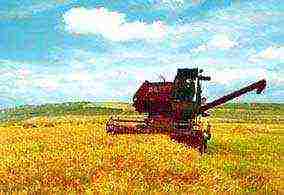 Q. The field is very beautiful when the harvest is ripe. See how the beauty of the field is shown. What do you see in the picture?
Q. The field is very beautiful when the harvest is ripe. See how the beauty of the field is shown. What do you see in the picture?
- Which field is shown?
- Who is painted in the center of the picture?
- Who drives the harvester?
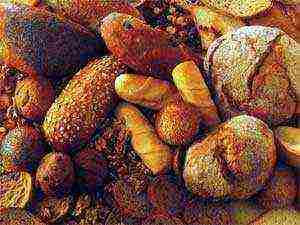 D. Combiner.
D. Combiner.
C. At the end of summer, a responsible harvest season begins for the grain growers.
Q. Guess another riddle?
He walks, cuts the wave,
Grain flows from the pipe.
D. Combine.
B. That's right, the grain is threshed with combines.
Q. Where is the harvested grain taken to?
D. To the elevator.
B. Heard in summer until sunset
The rumble of the harvesters by the river
And they are taken to the elevator
Harvest trucks
B. Grain is stored in an elevator. And now, children, we will reap the spikelets.
(children perform speech therapy gymnastics)
"We harvest spikelets"
Quickly lick your tongue first, the upper lip, then the lower.
Q. And now let us wind the grain.
(we perform breathing exercises "We Weigh the Grain")
Smile, open your mouth, put the wide edge of your tongue on your lower lip and calmly blow in the middle of your tongue.
 B. Not thunder rumbles, not firing,
B. Not thunder rumbles, not firing,
Goes, threshing rumbles.
Chu-chu-chu - I milk the grain. Children knock their fists against each other.
Chu-chu-chu - I twist the millstones. Rub their palms together with rotational movements.
Chu-chu-chu - I'll get the flour. Snap their fingers
Ah-ach-ach - I will bake a roll. "Pies are baked" (one hand on top, then the other).
Cho-cho-cho - it's hot in the stove. They stretch their arms forward, turn their palms away from themselves, then squeeze them to the chest.
Achiki - Achiki - delicious rolls. Clap their hands.
The teacher brings the car with the dough (children touch the lump of dough, sniff it)
C. Bread, wheat or rye, is baked from this dough.
B. Name the bread affectionately
D. Khlebushek
B. Name the bread crumbs
E. Bread crumbs
B. Name a tasty and healthy kvass from bread
D. Bread kvass
B. Name the dishes for the bread
D. Khlebnitsa
B. Name a person who grows bread
D. Khleborob
B. Name the person who bakes bread
D. Baker (Baker)
B. Bread slicer
D. Bread slicer
B. Name the factory where the bread is baked
D. Bakery
Q. Children tell the bread by smell / what?
E. Smelling, fragrant, aromatic
Q. What does the bread taste like?
D. Appetizing, tasty, sweet ...
Q. What kind of bread does it feel?
D. Fresh, soft, fluffy, firm.
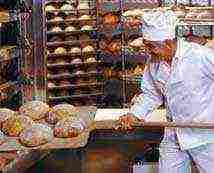 Q. And now, guys, let's remember with you the proverbs about bread:
Q. And now, guys, let's remember with you the proverbs about bread:
1. You can't get rye bread, loaf, rolls on a walk.
2. People cherish bread,
They spare no effort for bread.
3. Bread is the head of everything.
4. Rye bread - our own father.
B. Bread children are a food product, bread - salt they treat dear guests. Bread is considered the most expensive gift, sometimes people joke that the bunny gave the bread. So today we will draw such a bunny not with paints, but with flour.
Q. Let's, children, play a game called "Wheat and grain bearer"
Children - "spikelets" stand in two rows and squat. They raise their hands up and gradually get up, gently waving their hands to the right - to the left, forward - backward. Entering - "grain grower" (child) stretches his arms to the sides, walks between the rows. Children must have time to sit down (you can squat not earlier than the previous "spikelets"). The one who is hurt becomes a “grain grower” or is eliminated from the game.
Not with pencils, but with flour.
To the music, children draw the outline of a bunny with flour (with glue).
Outcome:
What grains are used to make flour?
What types of bread do you know?
Who grows the bread?
Educator of the highest categoryLarina Valentina VasilievnaMDOU d / s No. 4 "Ivushka" combined typeReutov 2011


